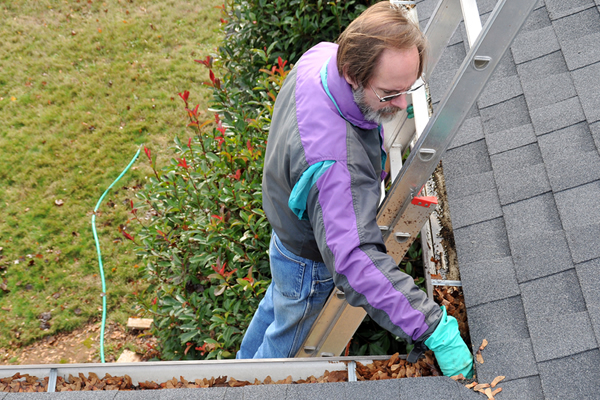Spring Roof Cleaning and Maintenance
Author: Lee Polevoi | March 3, 2021
April and May are the prime time for spring roof cleaning and maintenance in many parts of the U.S. — especially when getting fresh air in your backyard is as good as a vacation during this time of social distancing. You want your roof to look clean and appealing at all times, whether you intend to continue living in your home or have plans to sell.

After winter is over, it's important to visually inspect your roof for signs of damage or disrepair. But a word of caution: Homeowners should never attempt to walk on a slippery or damaged roof, especially if they suspect there are weak spots. If you think you need a more thorough inspection, calling a professional roofing contractor is the best strategy.
In the meantime, here are a few roof cleaning and maintenance steps you can safely do on your own.
Clear Debris From Gutters
Gutters are among the most accessible parts of a roof. Ideally, an occasional cleaning and DIY inspection during the winter helps maintain the gutters' integrity and prevents ice dam buildup, which can result in sheared-off gutters or leaks inside a home.
Even if that occasional cleaning isn't possible, warm spring weather presents the best opportunity to catch up on gutter cleaning.
A lot of dirt, leaves and other debris can fall on your roof during the winter months, clogging the gutters. If you feel comfortable standing on a ladder, cleaning out the gutters is an excellent first step in spring cleaning. Just remember: Wait until you've removed all the debris possible before flushing the gutter out with a hose. This ensures water will flow freely through the downspout.
At the same time, check for any other materials, like flashing or shingles, that have come loose during the winter months. Scrutinize metal areas for signs of rust.
Check for Missing or Damaged Shingles
Shingles are often susceptible to damage from bad weather. It's important to look closely at shingles during your initial springtime inspection, but standing on the ground to do it is your best approach.
Check first to see if any shingles are missing. Other things to inspect include:
- Shingles that look frayed or partially dislodged.
- Shingles with edges that are beginning to curl.
- Indications of shingles with water stains.
- Blistered shingles, which may have too much moisture trapped inside.
Shingles showing these signs of damage should be addressed immediately.
Watch for Mold, Mildew and Algae
For houses in areas with significant rain or snow, mold and mildew represent a constant risk to a roof's well-being. Left unchecked, these elements can seep into the home's foundation and wreak havoc with its infrastructure. Roofing experts advise you to use lead control strips or zinc to treat these "infected" areas.
Do an Inspection From the Inside
Yes, it's important to carefully look at the roof from the outside, but you should also look at the ceiling in your top floor or attic. As warm weather returns, check for any signs of light coming through (if you have an unfinished ceiling) or soggy, discolored areas (if you have plaster or another type of finished ceiling). Problems like these are a strong indication of possible leaks or moisture in the roof.
Don't Forget the Area Around Your House
Overhanging branches and other nearby vegetation can clutter or damage the roof. Trim the trees in the spring or fall to avoid problems in the future.
Enlisting the skilled services of a roofing contractor is the best way to ensure a thorough roof inspection and to see that the proper repairs are done as soon as possible.